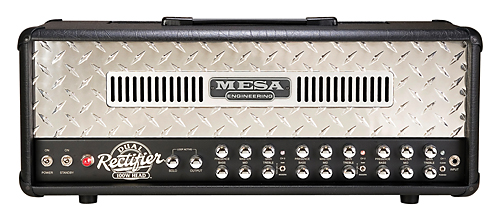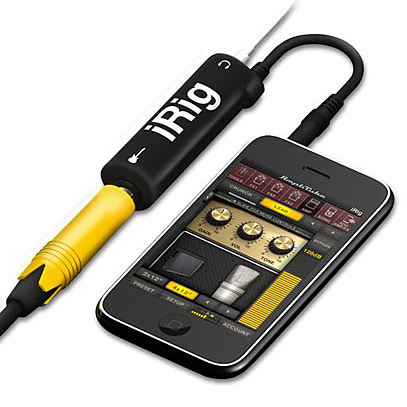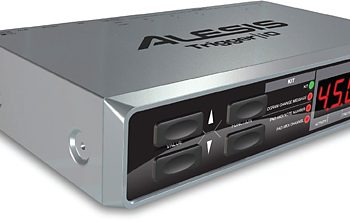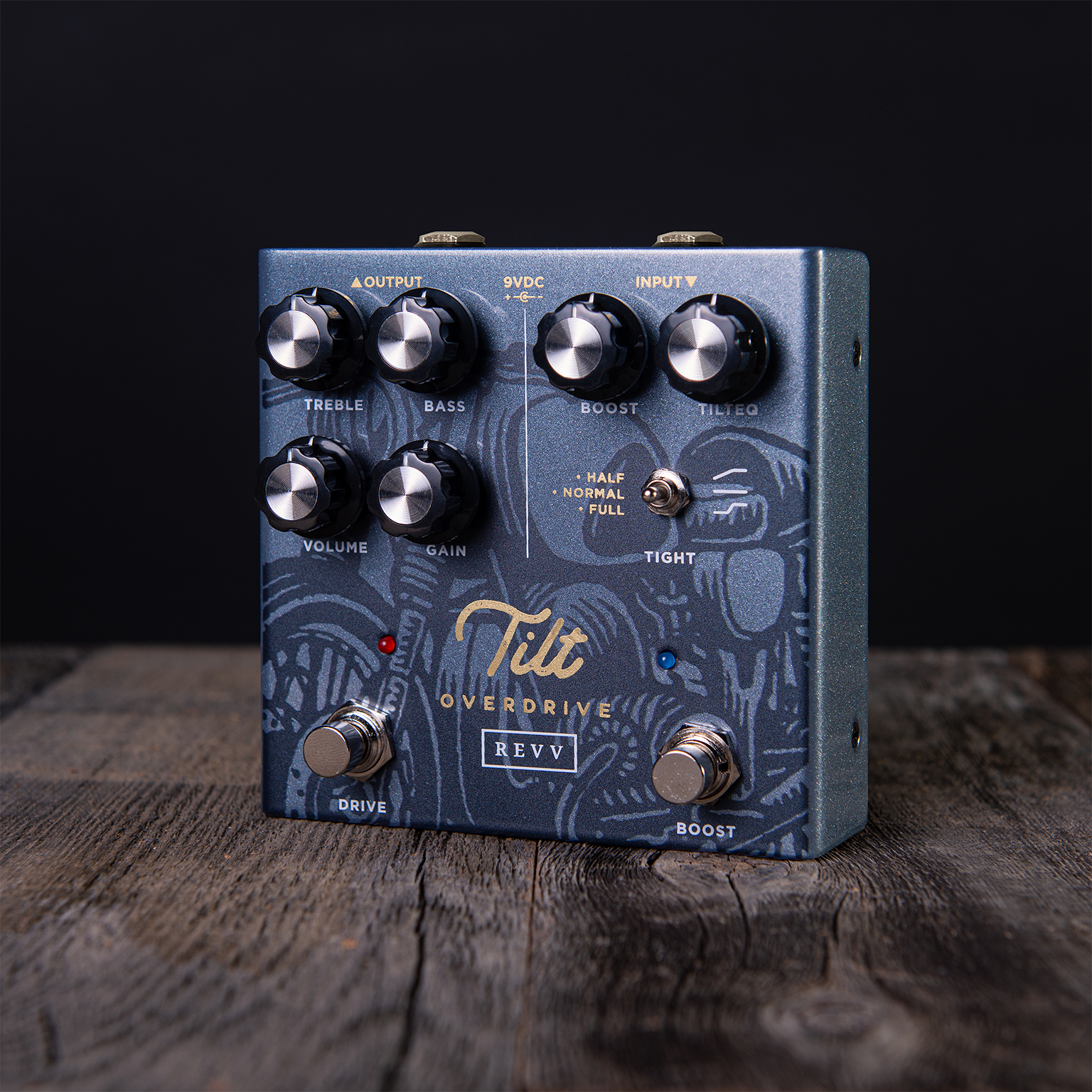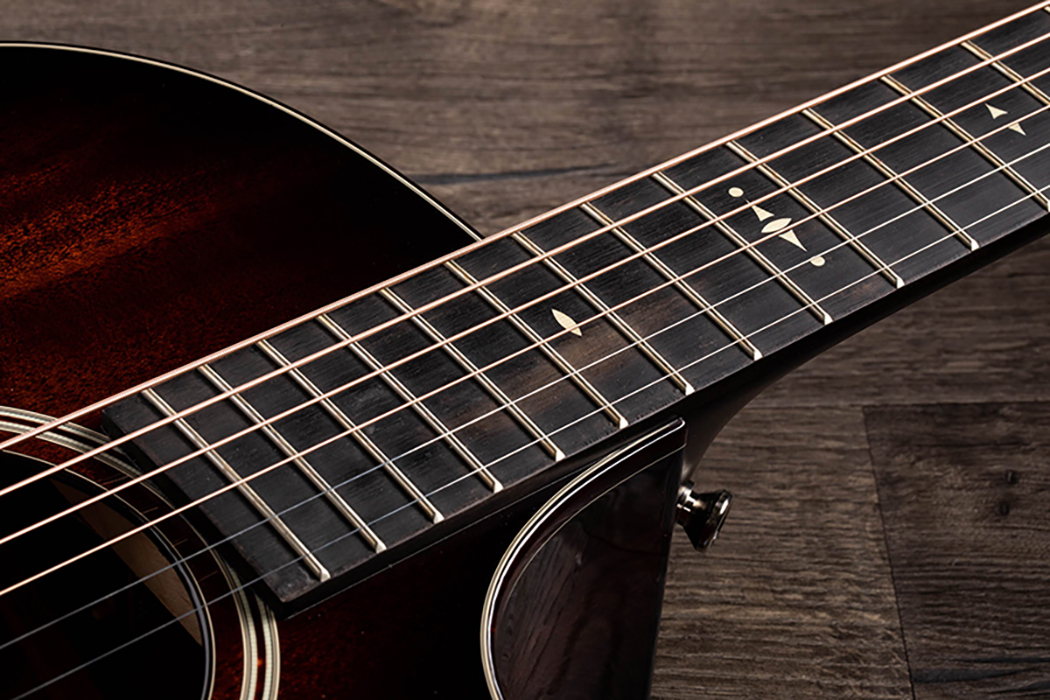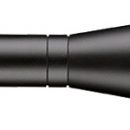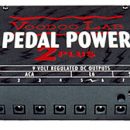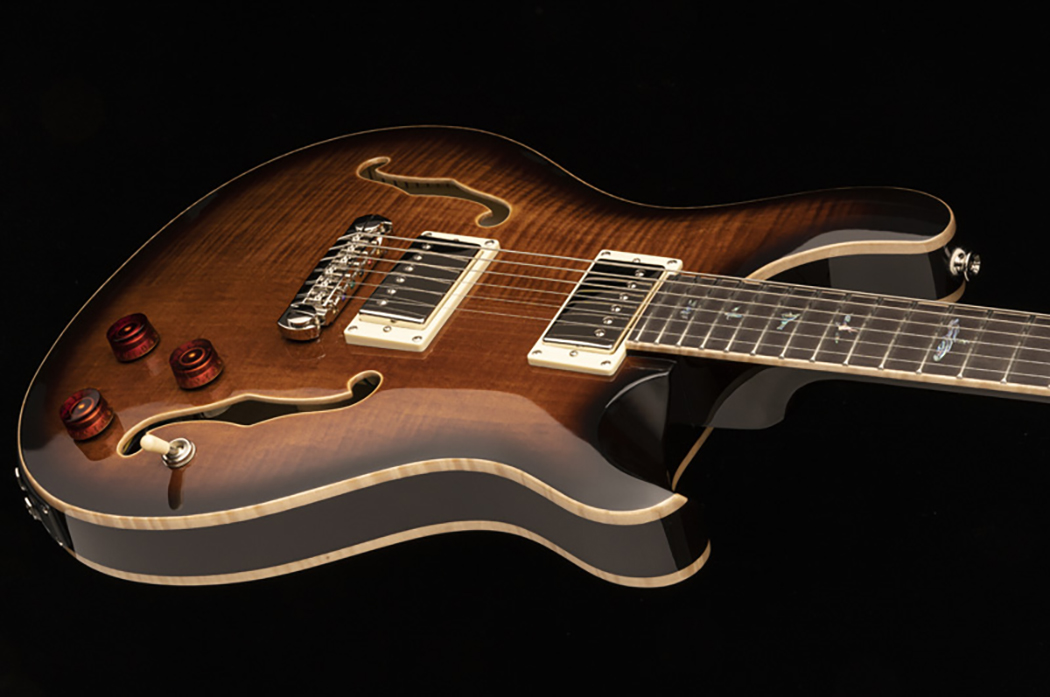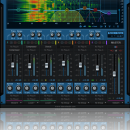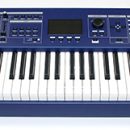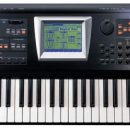 Reborn. The word conjures up images of an almost Biblical proportion. And if you share our passion for Mesa’s Dual Rectifier series, a newly redesigned and improved 2010 model is indeed akin to a religious experience.
Reborn. The word conjures up images of an almost Biblical proportion. And if you share our passion for Mesa’s Dual Rectifier series, a newly redesigned and improved 2010 model is indeed akin to a religious experience.
However, a redesign of anything “classic” is accompanied by the inevitable fear that an attempt was made to fix something that was not broken, or perhaps the new model will pale in comparison to the one that came before it. Fear not, dear readers. We are here to tell you emphatically that this is evolution the way you want it to be.
Based on commentary and suggestions from their user community, Mesa/Boogie took player suggestions to heart and the result is a greatly enhanced and fabulous sounding 2010 Rectifier series.
| Category | Value | Rating |
| Features | 20% | |
| Usability | 25% | |
| Sound | 25% | |
| Documentation & Support | 10% | |
| Price | 20% | |
| OVERALL RATING = 3.8 3.6 stars or better: Outstanding, WIHO Award 3 stars or better: Worth considering 2 stars or better: Suited to specific needs 1 star or less: Not recommended |
||
The 2010 model sports new Raw and Pushed modes, a vastly improved clean channel transplanted nearly intact from Mesa’s own Lone Star and Mark V amplifiers, a greatly improved series effects loop, a footswitchable tuner output, and more.
There is a good reason why these amps are used by artists at opposite ends of the tonal spectrum, such as Metallica and Lindsay Buckingham. Yes, it can deliver the punishing recto heavy metal tone it’s most famous for very well, but to write the Dual Rectifier off as an amp for metal players only is to recognize only a mere fraction of its potential. It’s filled with glorious classic rock and blues tones, too, making it by far one of the most versatile tube amps for rock guitarists within every sub-genre you’d like to name.
Features
If we said this amp is “feature rich” we would be guilty of the understatement of the century. Many amps offer loads of features, but what makes the Dual Rectifier different from all of them is the simple fact that it delivers all of those features at a consistently high level that discerning players require:
- Three channels with five modes (Channel 1 = Clean or Pushed, Channels 2 and 3 = Raw, Vintage High Gain or Modern High Gain).
- Multi-Watt technology: Allows you to assign either two or four power tubes per channel for either 50 or 100 Watts of power.
- Each channel features: independent gain, treble, bass, mid, presence and master volume controls, channel assignable Recto Tracking (Diode or Tube tracking) as well as the aforementioned Multi-Watt technology.
- Bias Select switch for 6L6 (stock) or optional EL34 tubes.
- Output Level control, which acts as a master volume control over all channels when activated (it can be bypasses and fully removed from the circuit).
- Solo Level control (when activated).
- Tuner output with mute (via the footswitch) for silent tuning.
- Bold/Spongy switch which acts like a built in Variac and drastically changes the character and response of the amp .
- New and improved effects loop, now series (the old Dual Rectifier had a parallel loop) which is selected via footswitch or can also be fully removed from the circuit .
- True Bypass switch to remove Output and Solo level controls, and the effects loop from the signal path. But as we commented in our review of the Dual Rectifier Road King II, it’s foolish to even consider pulling these features out of the circuit because they add so much value to the feature set of the amps.
- Slave out with level control, which is great if you want to run a wet/dry rig.
- Newly designed “3x3” footswitch (the bottom row allows you to select the three channels and the top row selects Tuner Mute, FX Loop, and Solo). If you’ve ever tried to place one of Mesa’s King Controllers on your pedalboard, you’ll especially appreciate this redesign.
Our evaluation model arrived with the Polished Diamond Plate faceplate (one of three faceplate options) which gives the amp some serious “bling bling!” However, those seeking a more “modest” appearance may choose to opt for one of the other two faceplate options, Black Taurus or Jute. And although it’s been standard Rectifier issue for years, we never tire of looking at the awesome leather corners, textured surfaces and the eternally cool Mesa/Boogie and Dual Rectifier logos!
Rounding out the goodies from the factory, our amp came packed with a Mesa logo branded slip cover as well as a carrying pouch and connecting cable for the footswitch, AC power cable, and a well-written owner’s manual.
Usability
It’s easy to imagine someone making the transition from a vintage Marshall or Fender amp being absolutely overwhelmed by the front panel of the Dual Rectifier (or Roadster/Road King amps). Let’s face it — there are twenty knobs and six mini toggle switches on the front panel alone! But once you get familiar with the layout, you’ll realize that Mesa’s panel layout is as intuitive as a hand to a glove.

Basically, each channel contains individual Volume and Gain controls, plus four tone shaping EQ knobs (more about how they react in our Sound section.) Additionally, each channel features mini toggle switches allowing you to select the new Multi-Watt technology (50 or 100 Watts) as well as the channel’s mode (Channel 1 = Clean or Pushed, Channels 2 and 3 = Raw, Vintage High Gain, or Modern High Gain.)
The rest of the front panel consists of the Power and Standby switches, input jack, Master volume knob, and individual channel LED indicators, as well as the Solo and Output knobs, the latter of which are only functional when the effects loop is activated. The Output knob acts as a control for the overall amp volume and is used most effectively after the volumes of the individual three channels have been set to match each other. Essentially yet another volume control, the Solo knob allows you to dial in a volume a few decibels higher than that of the Output control, providing a significant boost for solo work (no more relying on your sound man to “goose” your volume!). It’s important to note that it’s an independent volume control, so if your master output is set at 10:00 and the solo level is set for 11:00, but you decide to play more quietly with the band and drop the output down to 9:00, you’ll be for quite a rude awakening at solo time if you forgot to also reduce your solo level!

Moving to the back panel, we find a ¼” Slave Out jack with an Output knob, five speaker outputs for speaker cabinets of varying impedance, and a grouping of controls for the effects loop – two jacks for Send and Return (with a knob for send level) plus a five-way rotary control for assigning the effects loop to some (or all) of the channels as well as a true bypass option that takes the loop completely out of the signal path. While the latter may be desirable to players who scoff at the notion of using effects loops or perhaps get a warm/fuzzy feeling from hard bypassing the additional electronics, as we stated in our review of Mesa’s amazing Road King Series II amplifier, we believe this is a useless feature, as it renders null and void the essential Output and Solo controls.
After the effects loop controls we find the Footswitch input and a rotary control that allows you to override the footswitch and select any of the amp’s three channels manually. Additionally, the back panel contains four ¼” jacks to facilitate the use of external master switching and a Bias Select switch that allows the amp to use either 6L6 (stock) or EL34 power tubes without sending the amp out to a tech for biasing (provided you use Mesa Boogie-branded tubes or tubes pre-selected in Mesa’s bias range).
A staple of these amps for some time now, the Bold/Spongy switch acts like a built in Variac, lowering the voltage, which “browns” the sound and creates “sag.” Also included on the back panel are the channel assignable “Recto Tracking” (Diode or Tube Tracking) mini-toggle switches allowing the user to select either the tube or silicon (diode-based) rectifier for each individual channel. If fast, technical metal is your thing, you’ll find the diode-based rectification provides the fast response you need from an amp, while classic rock and blues lovers will prefer the more “laid back” feel of the tube-based rectification.
Rounding out the back panel is the newly-added Tuner Out, which provides a clean, padded signal to a guitar tuner. This is selectable via the amp’s footswitch, allowing for silent tuning when the amp is muted from the footswitch. We also found this additional output useful for re-amping purposes in the studio, since its clean output can be routed to your favorite computer-based amp modeler (in case you want to augment your killer Boogie tone with something else for “color,” of course).
 The redesigned footswitch is not only easy to use; it fits much neater on a small pedalboardl! We were most pleased with the 3x3 layout, which positions the switches in such a way that accidentally hitting the incorrect switch should not be a concern (unless your name is Paul Bunyon). We were also impressed with the footswitch’s included (and not hard-wired) super-long, 24-foot cable. You will never find yourself chained to the backline with this one.
The redesigned footswitch is not only easy to use; it fits much neater on a small pedalboardl! We were most pleased with the 3x3 layout, which positions the switches in such a way that accidentally hitting the incorrect switch should not be a concern (unless your name is Paul Bunyon). We were also impressed with the footswitch’s included (and not hard-wired) super-long, 24-foot cable. You will never find yourself chained to the backline with this one.
Sound
When it came time to put our 2010 “Reborn Recto” through its paces, we intentionally picked some of our favorite axes that decidedly run the tonal spectrum from vintage to modern: a 1957 re-issue Fender Stratocaster with Lindy Fralin single coil pickups, a Gibson Historic 1959 re-issue with boutique PAF repro’s, and an EMG-loaded Washburn HM series guitar. What time is it?? It’s time to ROCK!
We chose to plug our Rectifier head into two separate cabinets for testing purposes: an “oversized” Mesa/Boogie 4x12 Rectifier Standard slant cabinet and an Avatar 2x12 speaker cabinet, each loaded with Celestion Vintage 30 speakers.
For the long-time fans of the Rectifier series, fear not. We own the original, highly coveted, two-channel Dual Rectifier (April 1999 build), and we had it sitting on top of our 2010 model for direct comparative purposes!
Channel 1: Clean/Pushed:
High gain amps are not exactly known for great clean sounds, and this has been true to some extent even with Mesa’s awesome Rectifier series. While not abysmal by any means, the clean channel oftentimes required cranking the midrange and highs to achieve anything even close to a clean “sparkle.” Unfortunately, the uneven EQ would oftentimes contribute to an overly bright or thin sound, devoid of the percussiveness needed to sit authoritatively in a band mix. The 2010 Recto’s clean channel is based on the Lone Star and Mark V clean channels, perhaps Mesa’s best and certainly most popular clean tones, so our expectations were decidedly quite high.
We plugged in our Les Paul and switched the amp to the first channel, with the mode set to “clean.” With the gain around 12:30 and the EQ set to taste, we were instantly impressed with the re-vamped clean tones, which not only shimmers and sparkles, but also “snaps” like a vintage Fender or Marshall amp. Turning the gain up slightly from our starting point revealed more warmth and breakup, and we found this higher-gain setting useful for players that like to vary the amount of breakup simply by varying their pick attack. Our Strat also sounded great in this setting, especially for single note soloing using the neck pickup. At one point we further shaped the tone by placing a Tube Screamer (set for clean boost) between our Strat and amp, which provided a mid-hump as well as some added sustain. It was especially fun dusting off some SRV licks with this setup!
With a flick of the mini-toggle we were now in the “pushed” mode of channel one, which ups the ante by adding a big increase in gain, but maintaining the bright and clear EQ voicing we experienced in the clean mode. With our Les Paul plugged in again, it’s easy to see how someone in a Who tribute band could spend their entire life in this channel and mode! Thick, percussive chords crunched with authority, with all notes ringing out clear as a bell. Our Les Paul has an almost P90 vibe to it, which helped us achieve sounds not unlike Pete Townshend’s huge rhythm sound, heard on so many early Who performances. Who (no pun intended) would have thought an amp oftentimes tagged as a “Heavy Metal Only” high-gain monster could cop the sound of vintage Hiwatts?
Because this channel is voiced brighter than channels 2 and 3, you need to be a bit sensible when setting the Treble control. We found our best tones by keeping the treble on the lower side and using the Presence control to dial in the brightness. Also, we never needed to set the Bass above noon (as is typical with Mesa amps), which helped avoid any flubbiness or mud in the low end.
We should note at this point that changing the mode of the channel via the mini-toggle does create an audible “pop” as well as a significant volume drop between certain modes (this is true of all three channels). This is completely normal (and is noted as such in the owner’s manual), but to avoid any unpleasantness, it’s best to turn the channel’s master volume to zero before changing modes.
Channel 2 & 3 Raw/Vintage/Modern:
We chose to review Channels 2 and 3 together for the simple reason that the main difference between the channels is the taper of the Presence control, which is much tamer in Channel 2 and more aggressive and extreme in Channel 3. Otherwise, both channels are electronically and schematically nearly identical.
Channels 2 and 3 are where we find those blissful, signature high-gain Rectifier sounds heard on so many recordings over the past two decades. However, this amp is capable of much more than face-melting distortion, as evidenced by the medium gain, purring blues (or even clean) potential of the Raw mode.
The lowest gain mode on these channels, Raw is all new technology for the Rectifier series. Still using our trusty Les Paul and switched to Channel 2, we were able to coax sounds similar to the Pushed mode of Channel 1. Again, big chords sound heavenly, but due to the EQ structure of Channel 2 (which is not as bright and snappy as Channel 1) we were able to crank the Treble up, which not only helped achieve a great crunch sound, but added some gain as well. This worked great for Zeppelin-esque riffing or basically any stoner-rock riff our review staff could muster up! Interestingly enough, you can even use Channel 2’s Raw mode as a quasi-clean channel by keeping the gain below the noon setting, or simply by backing off your guitar’s volume knob. You won’t want to play “The Wind Cries Mary” in this setting, but jangly Byrds- or Tom Petty-style chording sounded great.
Vintage mode is, quite simply, that classic “squishy” liquid tone with thunderous bottom end that put the Rectifier series on the map. Anyone who owns an older two-channel Rectifier will instantly recognize this as the Orange channel sound. The higher-gain territory reminded us that if it’s metal you want, it’s metal you will get, so we put our Les Paul aside in favor of our EMG-loaded Washburn!
With the gain between 1:30-3:00 (and Metallica and Slayer riffs thundering through our office) we were once again reminded of the Rectifier’s paint-peeling potential. Even with the bass set relatively low (10:00) we could feel the floor and walls vibrating! Channel 2’s less aggressive Presence control taper allowed us to dial in that pleasing liquid tone that makes the guitar feel like you lowered your string gauge! To get some further “squish” in the sound, we switched the channel’s Recto Tracking (via the amp’s rear panel) from Diode to Tube, which (by design) made our sound a little looser and sloppier, but great for single note soloing with gobs of sustain.
Switching over to Channel 3 via our footswitch (no audible “pop” between channels, by the way), we were eager to compare the Vintage mode with that from Channel 2. By way of comparison, Channel 3 is a little more in your face than the previous channel, and again this is simply due to the way these channels are voiced from an EQ perspective. With the added Presence and “grind” of channel 3, we recognized the need to be careful with the gain control, because a little extra “hair” on the top end translates to “fizz” real fast. We found the sweet spot for gain to be around Noon to 1:00 with the Mid and Presence controls set low, bass just shy of the noon position and treble between 1:00-2:00.
While Channel 2’s Vintage mode tones were warmer and more pleasing to the ear when our reviewers played through it unaccompanied, Channel 3 sounded better in a band setting, adding just the right amount of sparkle and “cut” to sit well with the other instruments.
Last, (but certainly not least) it was time to explore the Modern modes of both Channels 2 and 3. The owner’s manual calls this mode “aggressive” and “rebellious” and that about sums it up! Basically, this mode gives you a “little bit more” of everything you experienced in Vintage mode including more gain, low end, and overall “tightness.” Again, the Metallica and Slayer riffs abound (as well as a few flights of fancy into Nu-Metal territory) and it was at this time that our staff began using words such as “brutal” and “crushing” to describe the sound! If the low end of Vintage mode rattled our walls, Modern mode gave us an indication of what it must be like to be crushed by Thor’s hammer!
Again, the main differences between Channels 2 and 3 in this Modern mode is the top end, again making Channel 2 a bit smoother and Channel 3 more aggressive and “in your face.” We preferred diode tracking for both channels in modern mode, as it tended to keep the heavy riffage and bottom end tight and focused (even through our smaller 2x12 cab). Dropping the wattage down to 50 Watts on Channel 3 (which also decreases the headroom) gave our dialed in tone a bit of “sag” which is a great tone tweak for those who find the focused sound a bit too stiff. If it’s even more “squish” you crave, switching the Bold/Spongy switch to “Spongy” will get you even closer, though this mode isn’t well suited to high-gain metal in general.
The high-gain tones on Channels 2 and 3’s Modern mode (even with sick amounts of gain) never got sloppy or undefined. A loose bottom end has been a common complaint of the Rectifier series, but this 2010 model is by far the tightest Rectifier we have ever played. Additionally, the midrange seems to have been re-shaped as well, which provides some “meat” and “crunch” and also helps to tighten things up. These were really the only areas where we could honestly hear a difference between the 2010 and our older reference model. In fact, using the 2010’s Channel 2 in Vintage or Modern mode (especially with tube rectification) created a tone nothing short of the signature Rectifier sound, and any perceived difference in tone is, quite frankly, an exercise in hair-splitting.
Documentation and Product Support
It’s no secret that Mesa’s owner’s manuals are simply the best in the business. Well written, informative and oftentimes humorous, be sure to set aside some quality time to read it cover to cover, especially if you are new to Mesa/Boogie amps or the Rectifier series in general, or you’re upgrading from an earlier two-channel model.
Price
At $1,899 this U.S.-built amp is priced very well. For $1,000 less than the price of a Road King II, you get many of the same features and legendary tone at a much lower price point. Perhaps the tougher decision would be choosing between this amp and the Dual Rectifier Roadster.
Considering the simple fact that you are essentially getting three amps in one head, with top-shelf construction, accessories, and great customer support, this is one extremely versatile, hard-rocking tone machine.
Contact Information
Mesa/Boogie
www.mesaboogie.com
| Evaluation Short-List |
|

